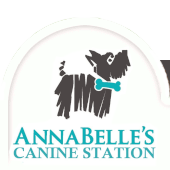By: Dawn Archer Pizzoferrato, ABCDT, owner of Arrow Dog Training
 As a professional dog trainer, one of the most common problems I’m asked to address is the leash-reactive dog. You’ve all seen what I’m talking about, the dog that barks or lunges at other dogs, people or any number of other triggers.
As a professional dog trainer, one of the most common problems I’m asked to address is the leash-reactive dog. You’ve all seen what I’m talking about, the dog that barks or lunges at other dogs, people or any number of other triggers.
First, I’d like to explain why I think dogs become leash-reactive. Dogs, like most animals, have a fight or flight reaction to something that is scary. When a dog is off-leash, he is free to completely avoid something that is scary, or examine something that he is curious about and then flee if necessary.
There are also those dogs, like my dog, Arrow, who are reactive due to excitability. These dogs are not frightened or fearful of strange dogs and people; they are excited by them and wish to greet them immediately, because they love them so much. This problem can be just as disturbing to a pet parent, with a larger or in my case, very loud dog, and this problem can be just as difficult to train away.
When dogs are “on leash” they are not free to explore or greet in a natural manner. They are held back and restricted, creating an unnatural, vulnerable state. And then there are the leash corrections they get for attempting to greet in a normal doggie fashion. Those leash corrections can create additional anxiety or fear about greeting dogs and all manner of behavior problems with other dogs.
 So what’s a concerned pet parent to do? The answer is BAT training. BAT stands for Behavior Adjustment Training. BAT is a technique of training that teaches your dog an alternative behavior (and eventually a different emotional response) to a trigger.
So what’s a concerned pet parent to do? The answer is BAT training. BAT stands for Behavior Adjustment Training. BAT is a technique of training that teaches your dog an alternative behavior (and eventually a different emotional response) to a trigger.
It works by teaching the dog to control his own comfort level. In human psychology, it’s called “functional analysis.” BAT uses functional reward (moving away from the source of stress) plus a food or toy reward, combined with clicker training and desensitization, to help dogs make better choices and stay calm using a process that is correction-free.
At first, complete avoidance is required and rewarded. Then gradually, to be rewarded, the dog will just need to give avoidance/calming behaviors like “turn away,” “look away,” or ground sniffing when confronted with triggers. All of these behaviors induce calmness in our dogs. And when rewarded for calmness enough, it becomes the chosen alternate response to previously reactive triggers. The one crucial element is that the dog MUST remain below his reactive threshold at all times. This means you must keep enough distance between your dog and his trigger so that your dog can be calm, pay attention to his handler, and follow simple basic commands. At first, this distance may be quite a far, but with practice and patience, the distance will get smaller and smaller.
This method works great, and over time, truly rehabilitates reactive dogs. If you have a reactive dog and need help, please visit www.coolcitydogs.com and check out clicker classes by Arrow Dog Training or email dawnpizzo@yahoo.com for information on private in-home training.
Learn More About Dawn & How to Get Your Dog On Target!
 Dawn is an Animal Behavior College Certified Dog Trainer, an experienced Nose Work Instructor, an AKC Canine Good Citizen evaluator, and the owner of Arrow Dog Training. Sign up online or call 517.599.0995.
Dawn is an Animal Behavior College Certified Dog Trainer, an experienced Nose Work Instructor, an AKC Canine Good Citizen evaluator, and the owner of Arrow Dog Training. Sign up online or call 517.599.0995.
Dawn is AnnaBelle’s resident clicker training specialist and she can help you Get Your Dog on Target! Dawn uses scientifically proven “clicker training” and “free shaping” to teach your dog all the basics plus other fun, useful behaviors. She uses operant conditioning and positive reinforcement, without correction, to help you and your dog build a bond of trust and respect.
In addition to presenting Doggie Do Good clicker classes, Dawn also offers Nose Work and therapy dog classes. Dawn’s group classes are taught at AnnaBelle’s on Tuesday and Wednesday evenings. Click here to see her complete class schedule!










